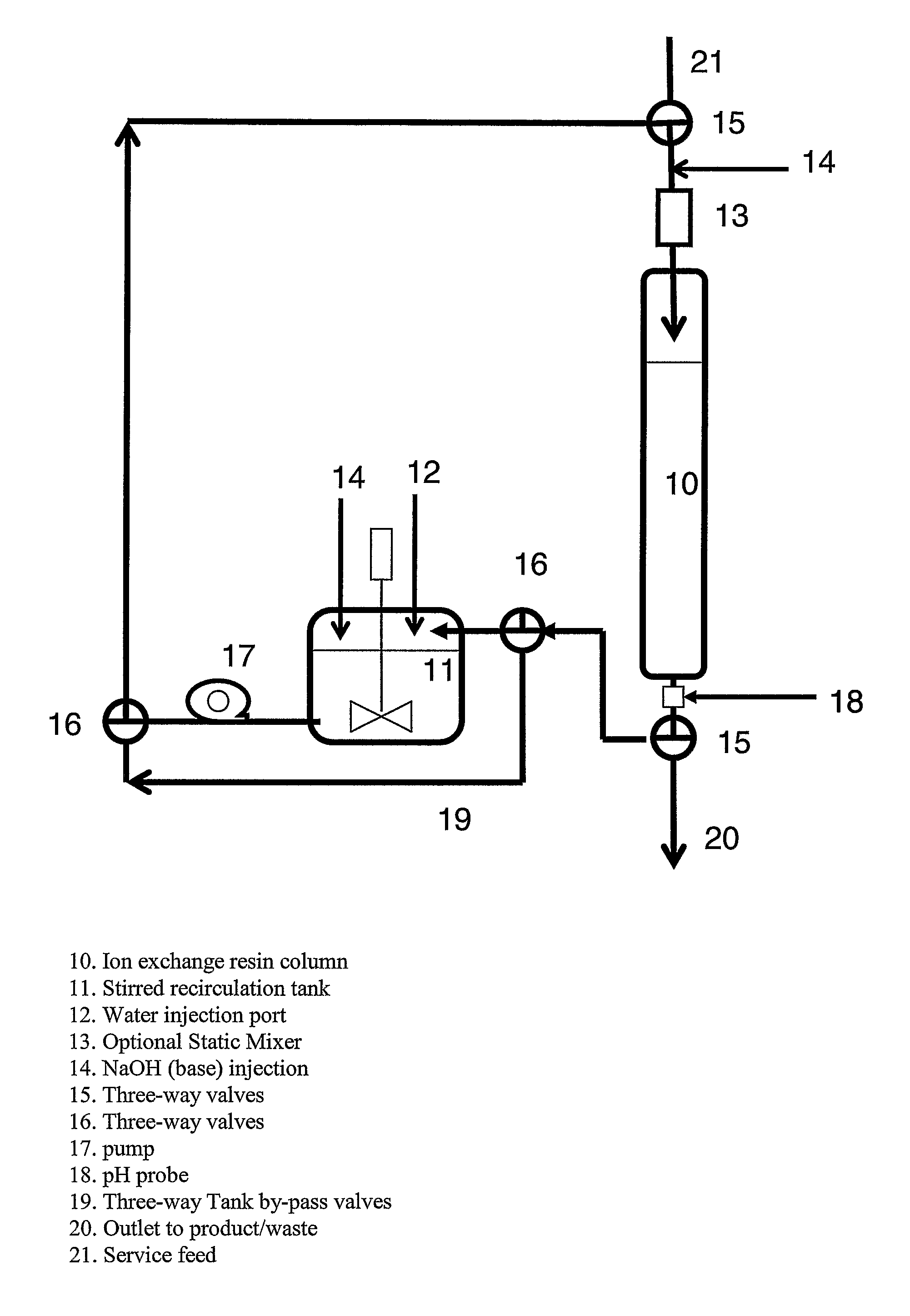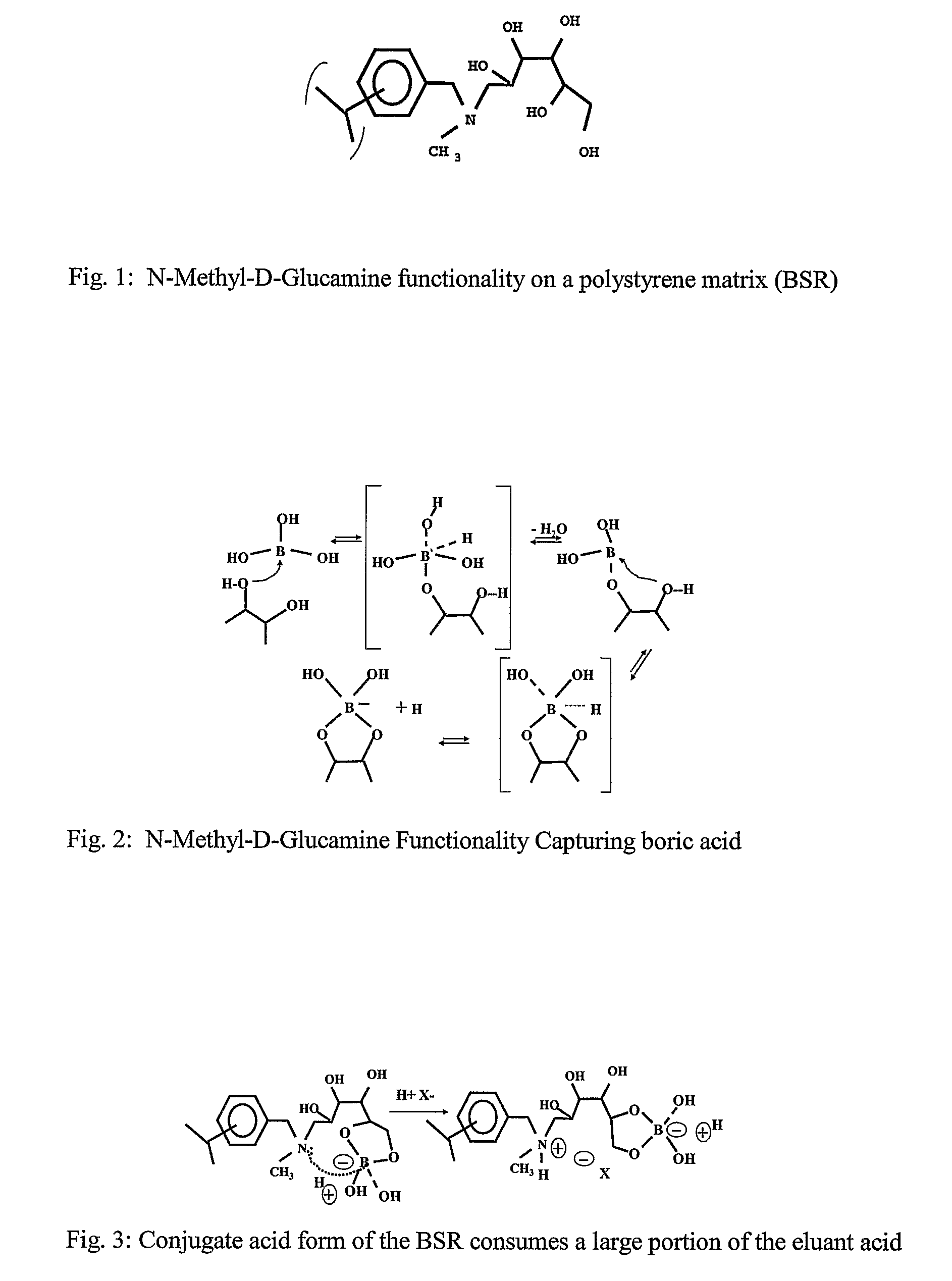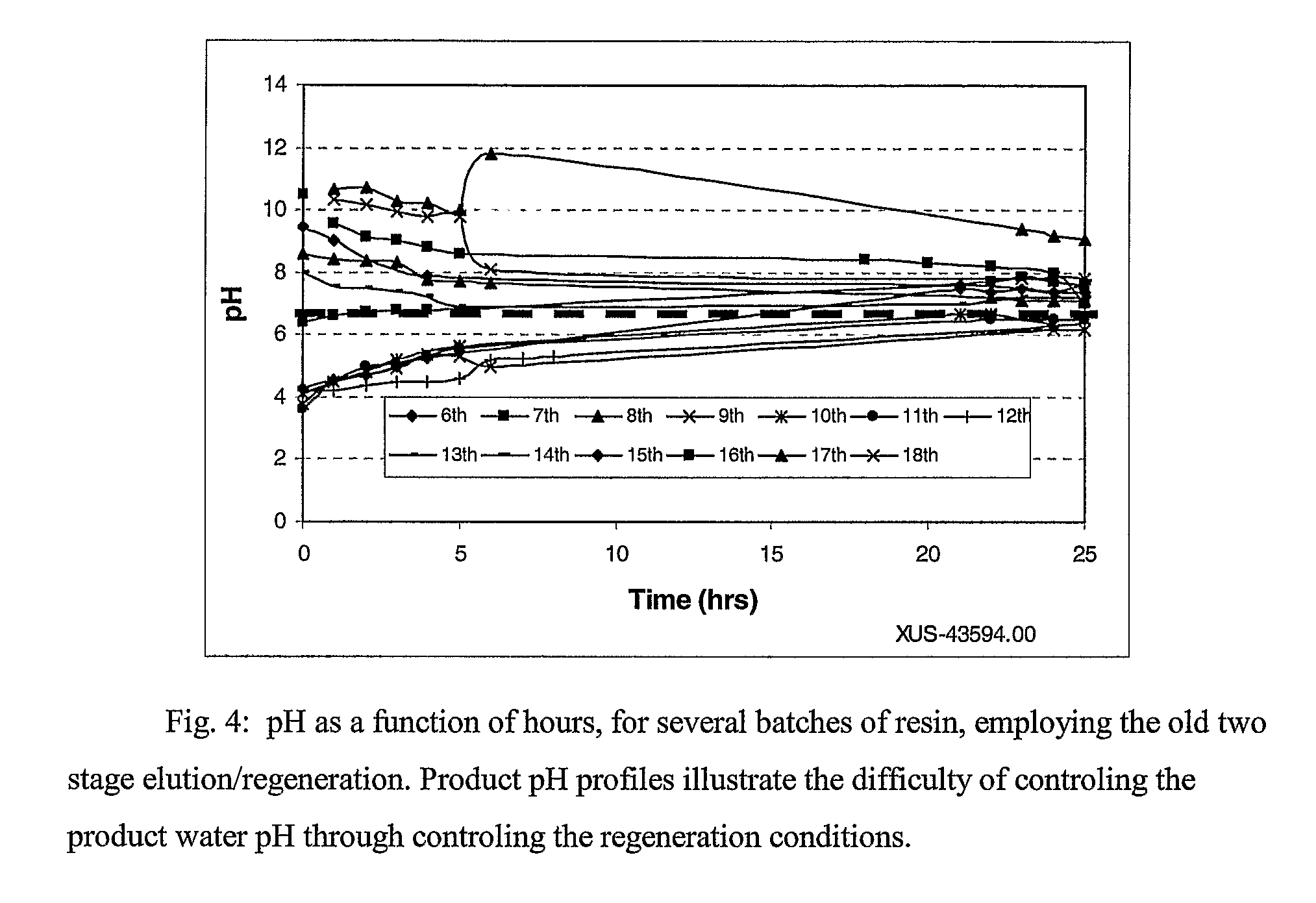Alkaline regeneration of N-methyl-D-glucamine functional resins
a technology of n-methyl-d-glucamine and functional resins, which is applied in the direction of moving filter elements, filtration separation, and separation processes, etc., can solve the problems of boron level, increased cost, shrinkage and swelling of bsr, etc., and achieves low cost, improved boron removal efficiency, and low energy membrane
- Summary
- Abstract
- Description
- Claims
- Application Information
AI Technical Summary
Benefits of technology
Problems solved by technology
Method used
Image
Examples
example 1
[0059]A newly commercialize BSR, XUS-43594.00 (The Dow Chemical Company, Midland Mich.), was titrated with sodium hydroxide (caustic) to determine the ionization at pH 7.
[0060]Calculations based upon our caustic titration of BSR, XUS-43594.00 conjugate salt form, confirms ionization of this resin at pH 7 is about 40% (FIG. 11). Our titration was done very slowly (30 min to 1 hr between samplings), allowing the solution and resin to fully equilibrate between pH readings.
[0061]Simonnot et al. have published a graph depicting the titration of a similar BSR conjugate acid salt, but the fine-structure of the curve does not appear in the region of pH 6 as it does in our FIG. 11. See Marie-Odile Simonnot, Christophe Castel, Miguel NicolaÏ, Christophe Rosin, Michel Sardin and Henri Jauffret, “Boron removal from drinking water with a boron selective resin: is the treatment really selective?”, Water Research, Volume 34, Issue 1, 1 Jan. 2000, Pages 109-116, referenced in the background of this...
example 2
[0062]A newly-commercialized BSR, XUS-43594.00 (The Dow Chemical Company, Midland Mich.) was tested for caustic release following a second stage regeneration using excess caustic. FIG. 12 depicts the spike and lingering release of caustic from BSR when SWRO permeate is introduced as feed. The data show a release of caustic even after approximately 500 bed volumes of rinsing with salt free RO produced water to a constant of pH of about 8. The significant release of hydroxide ion, upon introduction of the more brackish SWRO permeate feed Illustrates that the BSR significantly ionized water even at pH 8.
example 3
[0063]In an ion exchange column, a freshly eluted BSR, XUS-43594.00 (The Dow Chemical Company, Midland Mich.), was rinsed with 1-3 bed volumes (BV) of fresh water at a rate of 5-10 bed volumes per hour (BVH). A vessel containing 0.3-1.0 BV of fresh water was placed in a pumping circuit with the BSR ion exchange column apparatus. Sodium hydroxide was added to the vessel in an amount equivalent to about 80% of the molar content of NMG functionalization contained within the quantity of BSR in the column XUS-43594.00 (resin is about 0.9 equivalents per liter of resin). Pumping was initiated at a rate of 20-30 bed volumes per hour (BVH) in a co-current (down-flow) recirculating fashion. After 60-90 minutes the recirculating vessel pH had risen to about 5.8 and remained nearly constant. FIG. 8 compares the pH profile of a recirculation loop with and without a recirculation tank. The graph illustrates the pH profile at each outlet of the recirculation tank and the column outlet during a re...
PUM
| Property | Measurement | Unit |
|---|---|---|
| concentration | aaaaa | aaaaa |
| concentration | aaaaa | aaaaa |
| mol % | aaaaa | aaaaa |
Abstract
Description
Claims
Application Information
 Login to View More
Login to View More - R&D
- Intellectual Property
- Life Sciences
- Materials
- Tech Scout
- Unparalleled Data Quality
- Higher Quality Content
- 60% Fewer Hallucinations
Browse by: Latest US Patents, China's latest patents, Technical Efficacy Thesaurus, Application Domain, Technology Topic, Popular Technical Reports.
© 2025 PatSnap. All rights reserved.Legal|Privacy policy|Modern Slavery Act Transparency Statement|Sitemap|About US| Contact US: help@patsnap.com



